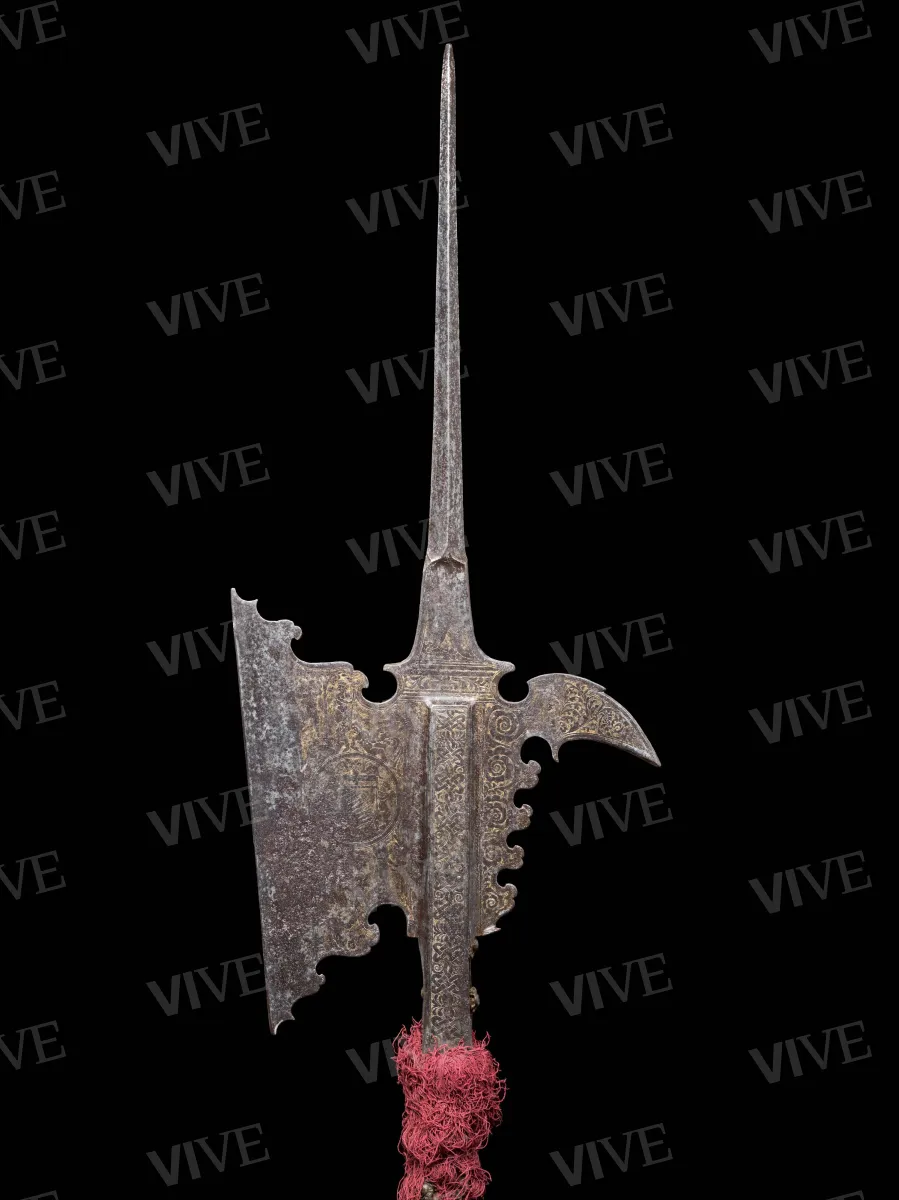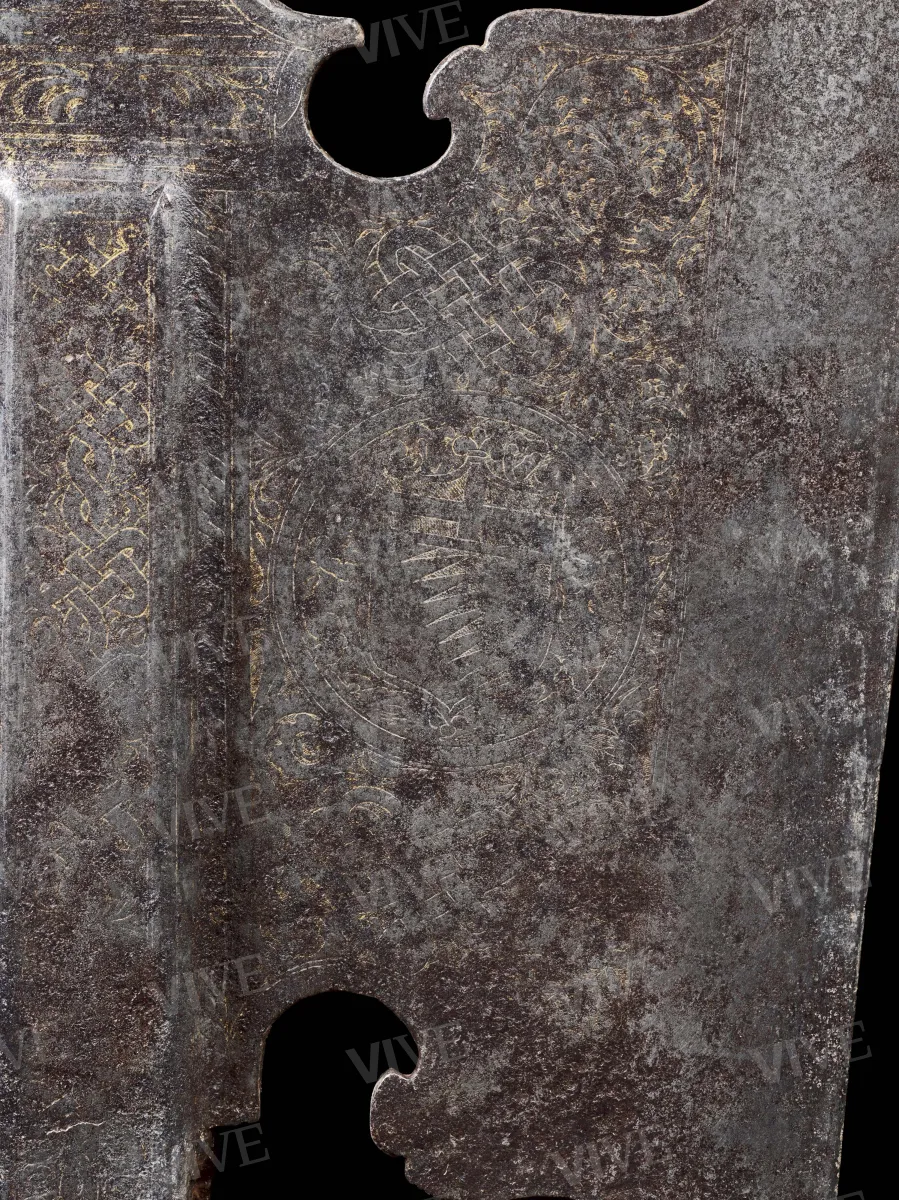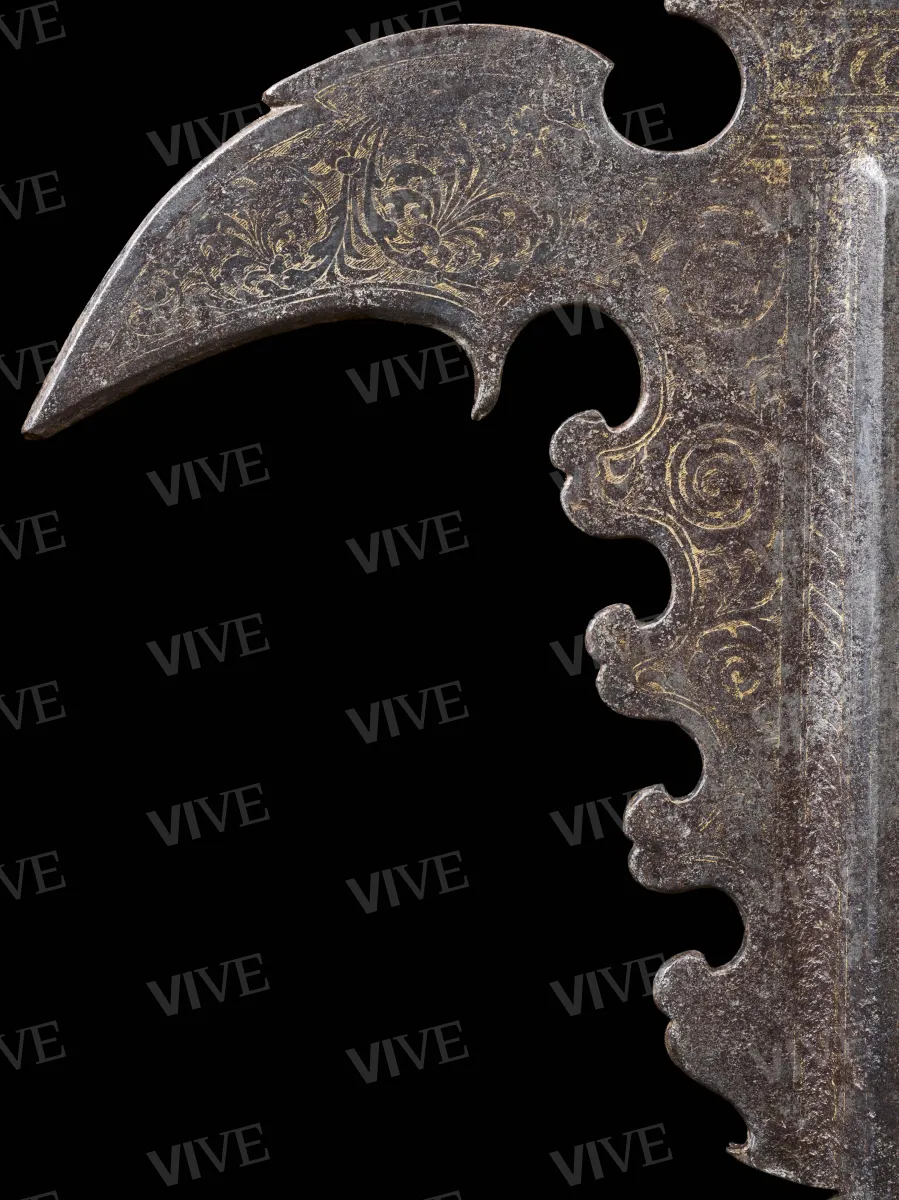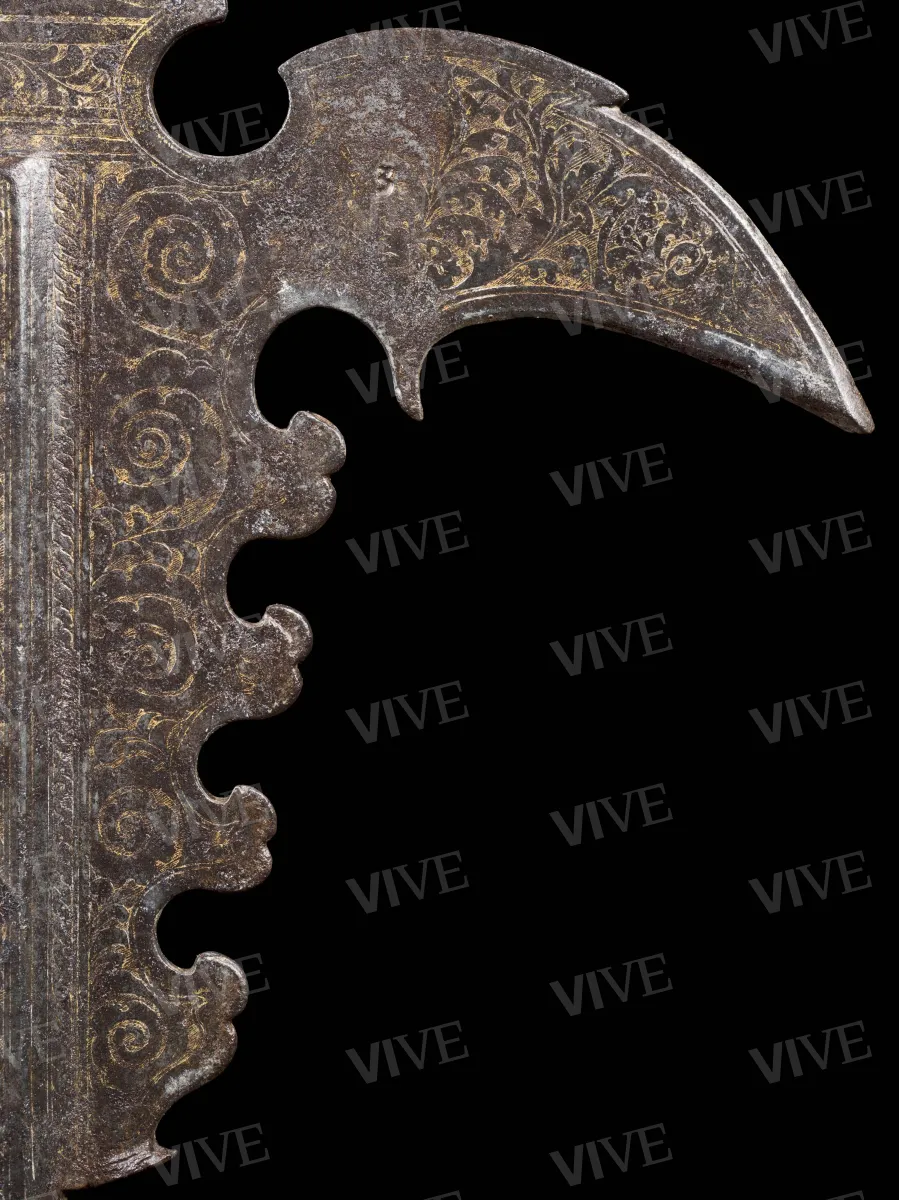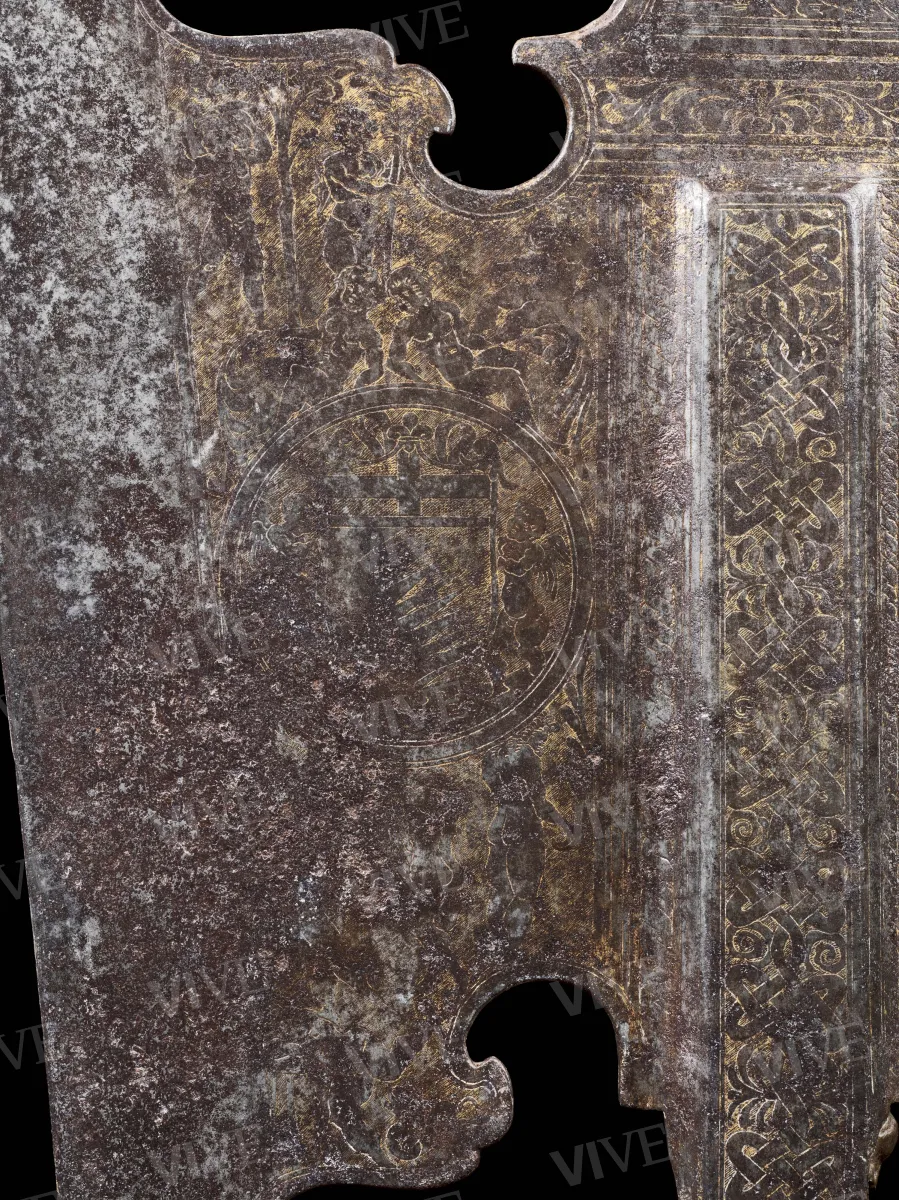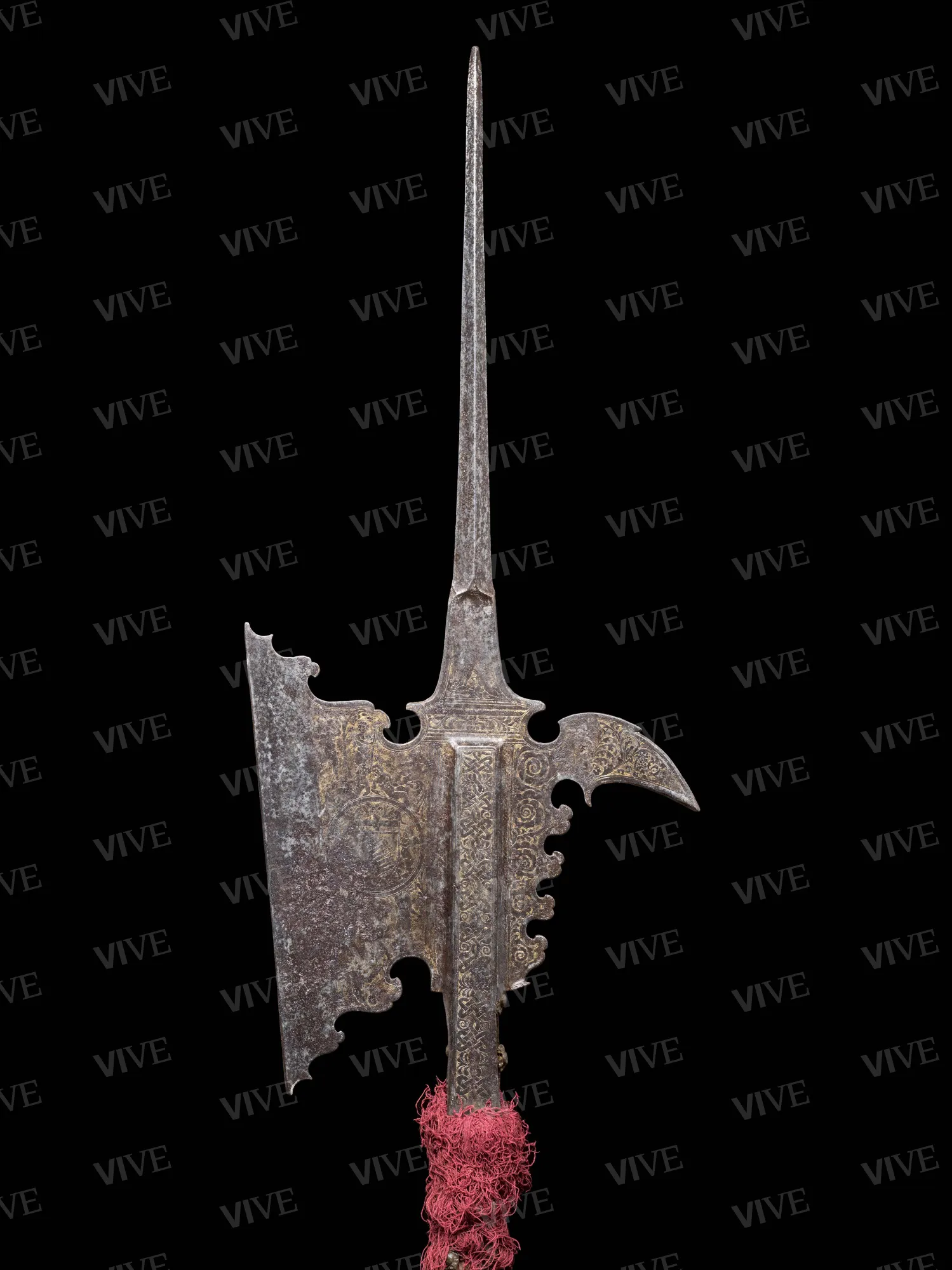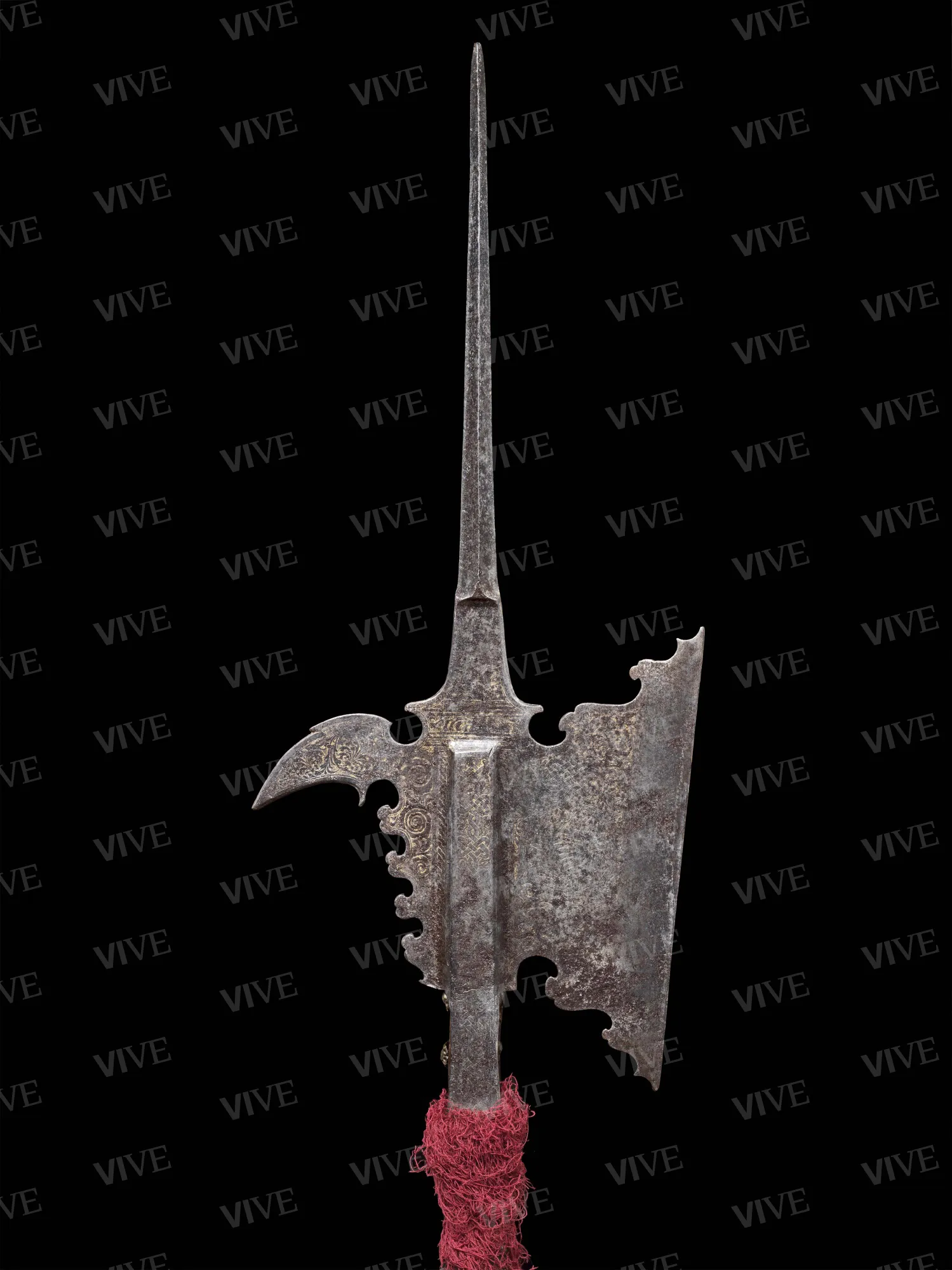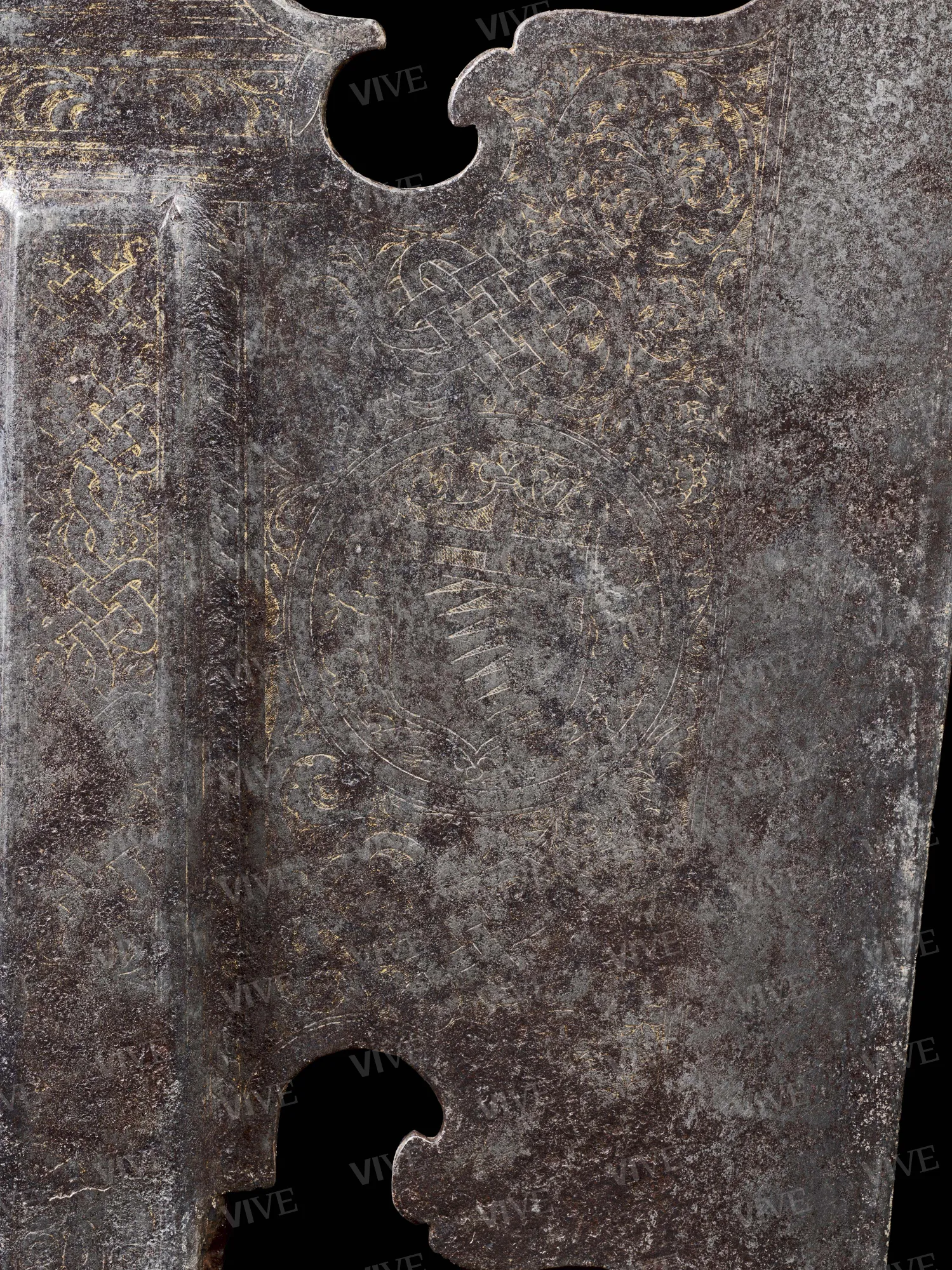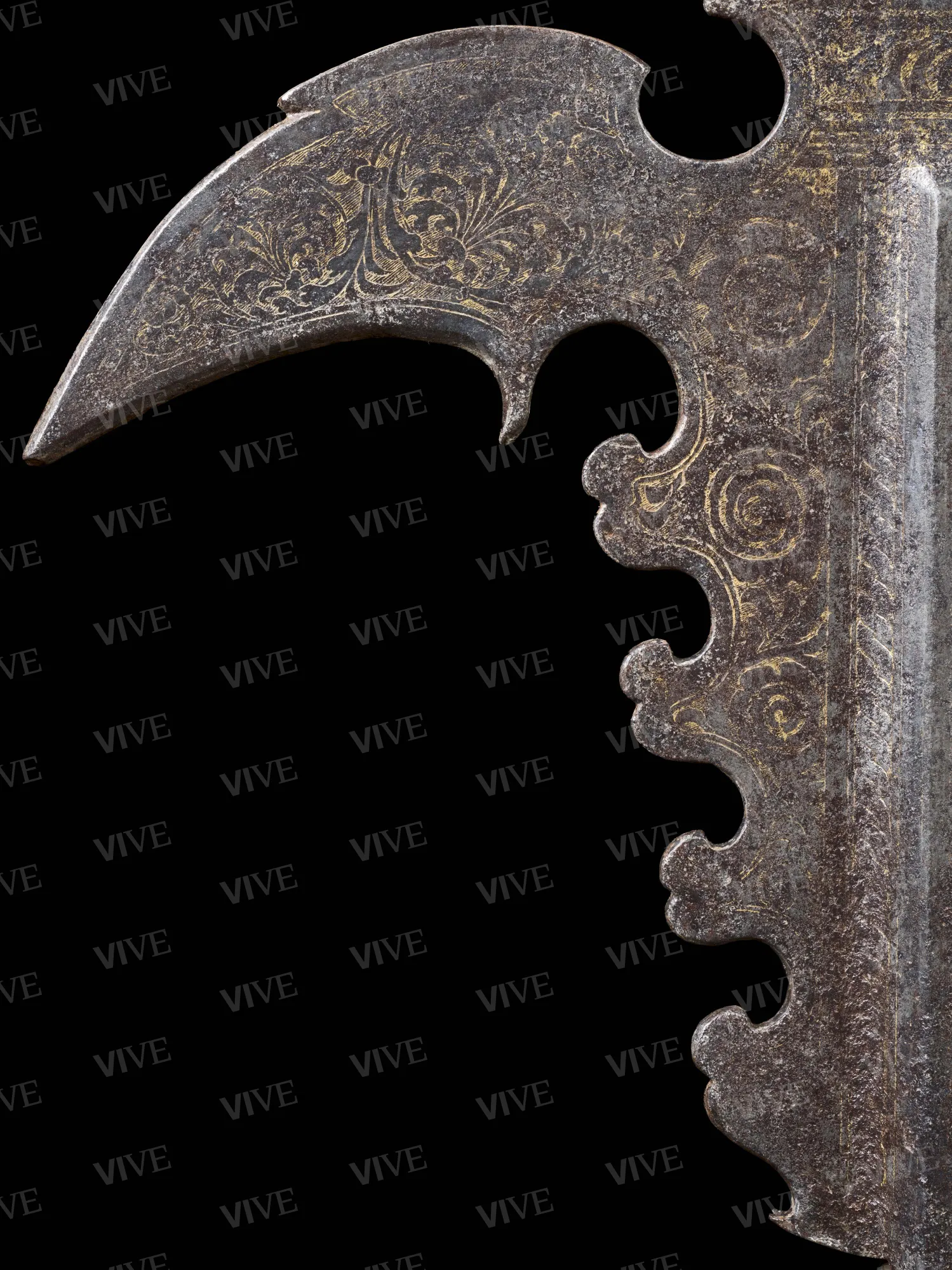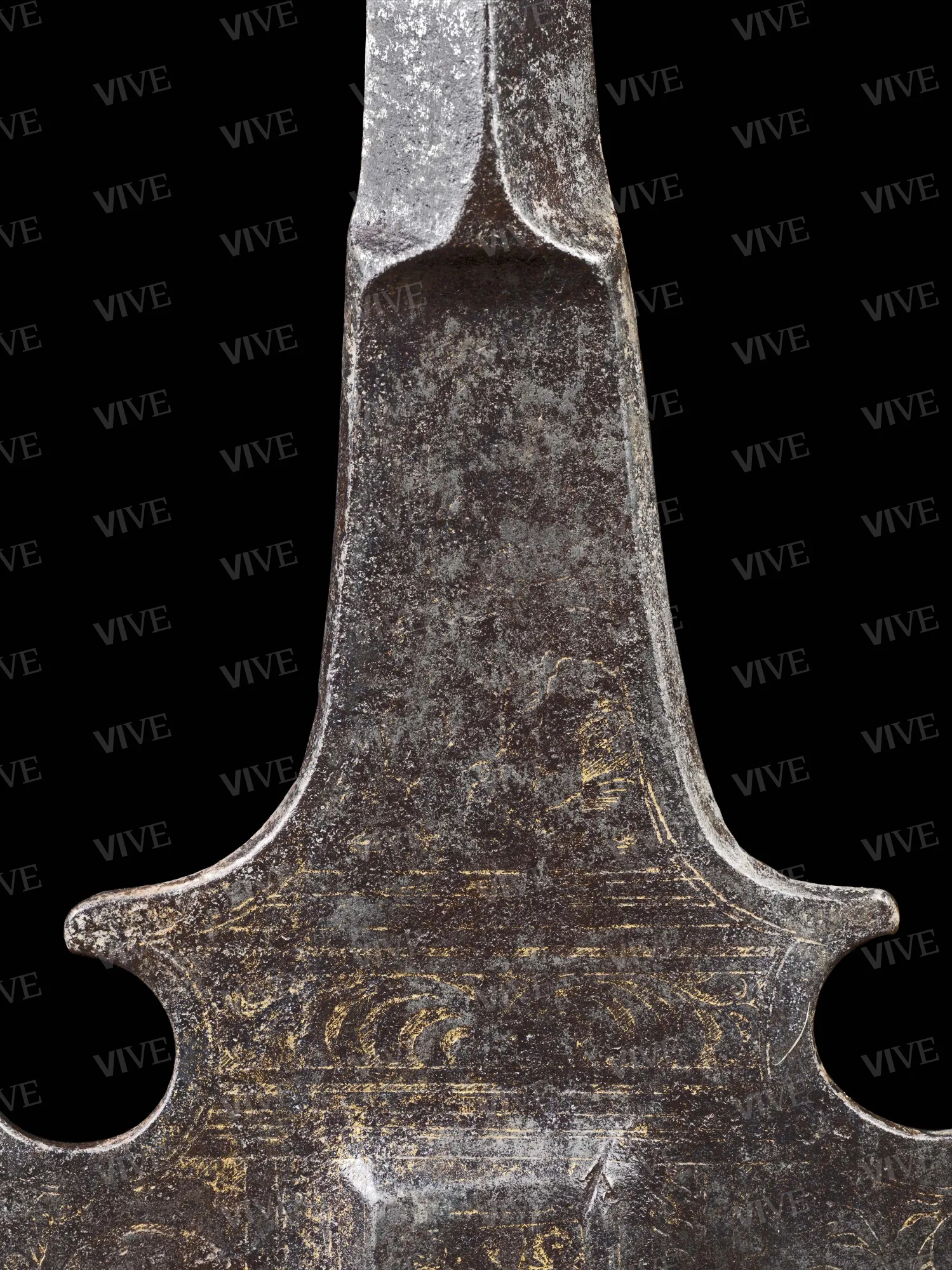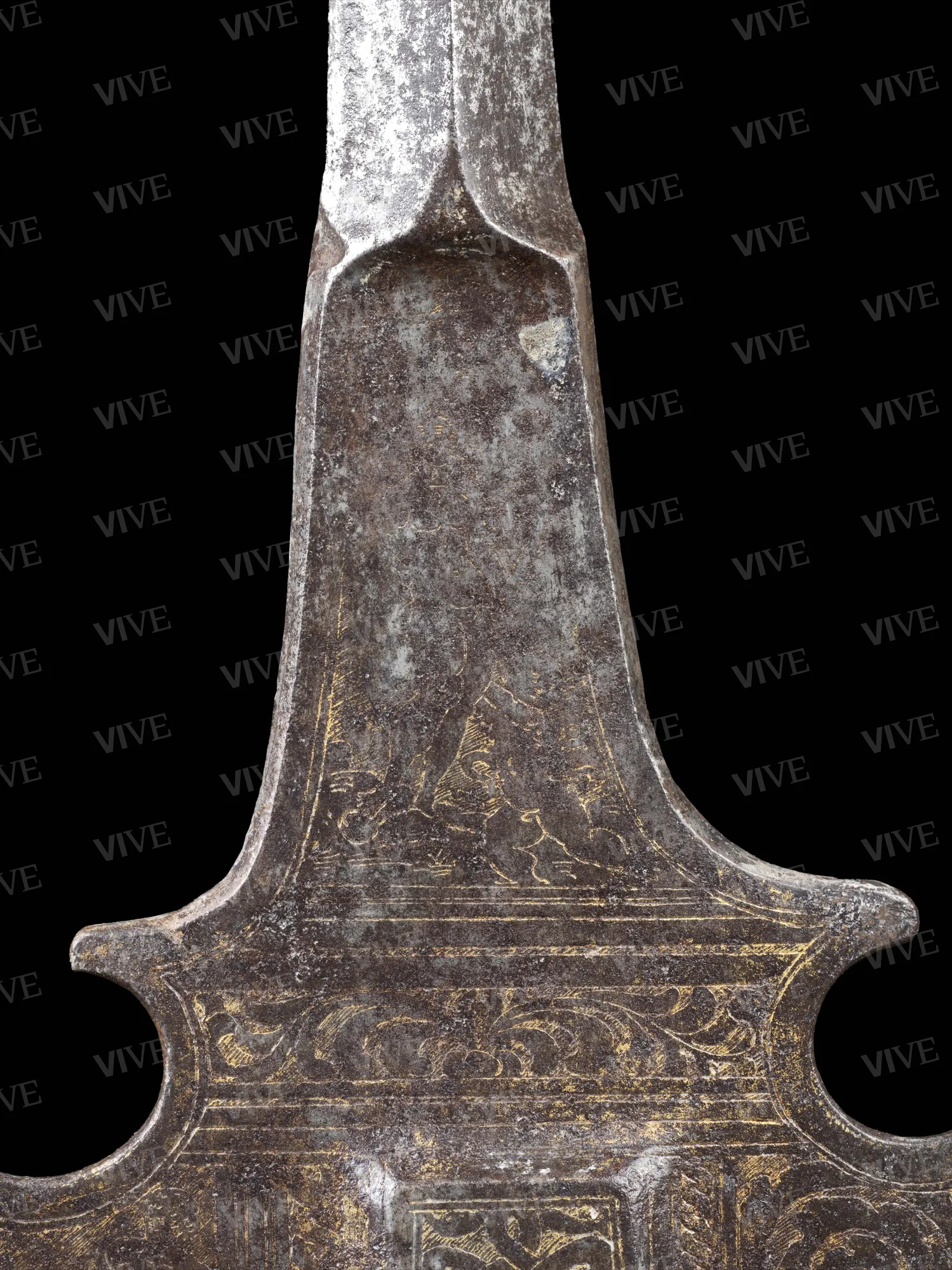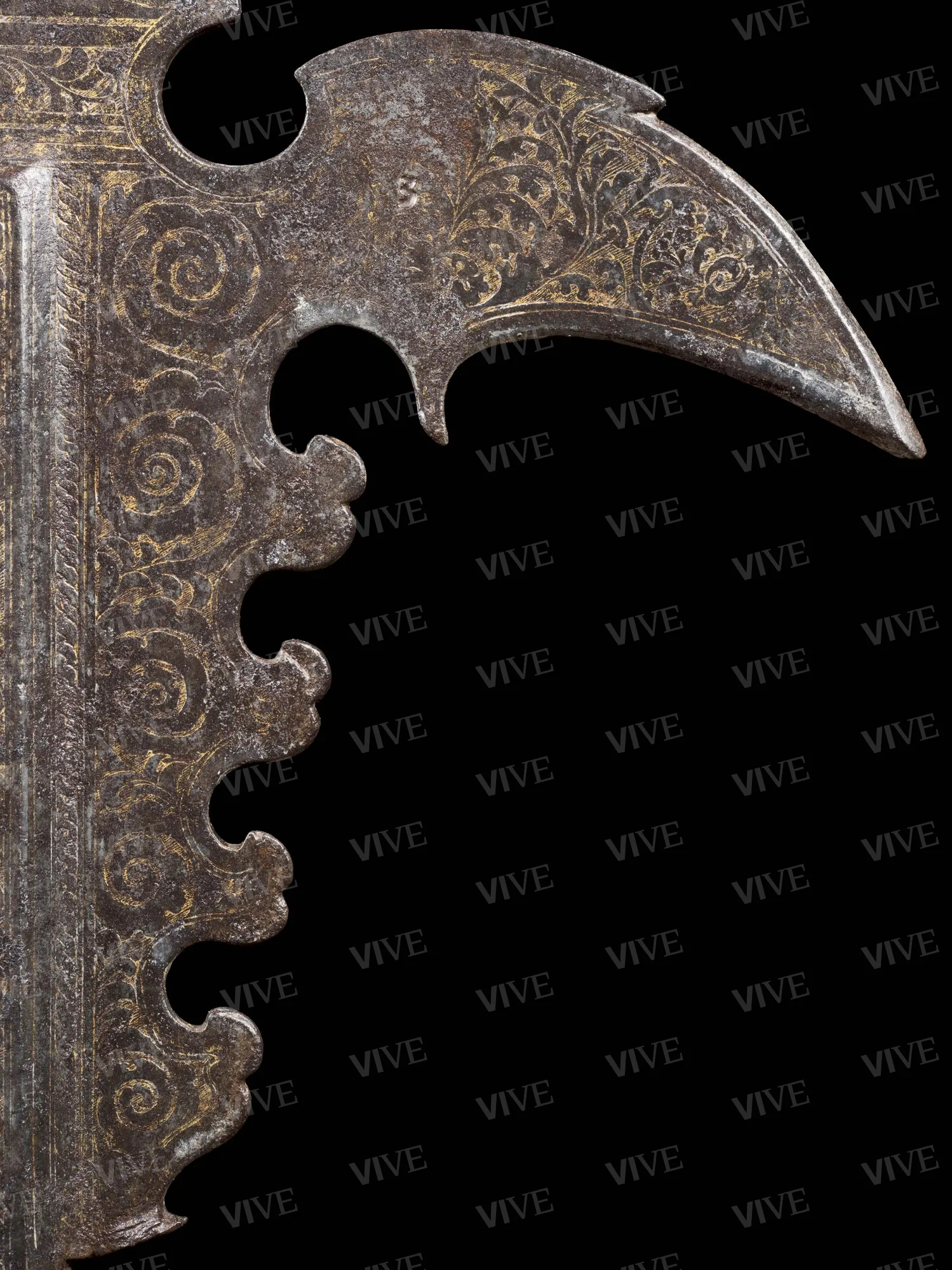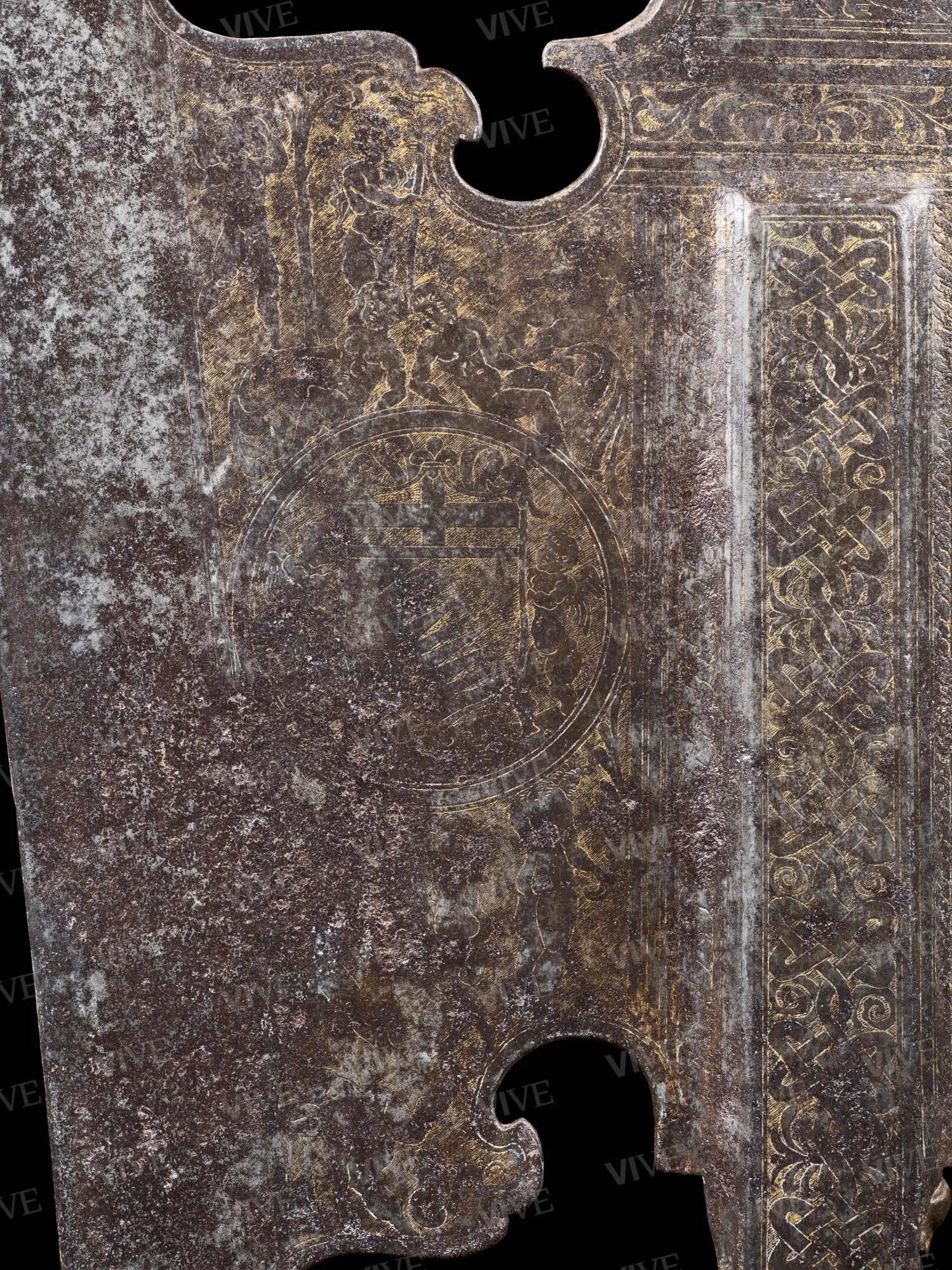Halberd with the Bentivoglio coat of arms
Alessandro Coltelli 1487
The halberd consists of a wooden shaft, albeit broken, with an attached metal component featuring an axe, cusp, and falcon-beaked tooth. The entire piece is adorned with engravings and gilding that display acanthus spirals, cherubs engaged in various activities, and a central roundel on the axe bearing the shield of the Bentivoglio family, rulers of Bologna. This highly ornate halberd was originally intended as a ceremonial weapon, to be carried in processions and displayed as a symbol of dynastic affluence.
The halberd consists of a wooden shaft, albeit broken, with an attached metal component featuring an axe, cusp, and falcon-beaked tooth. The entire piece is adorned with engravings and gilding that display acanthus spirals, cherubs engaged in various activities, and a central roundel on the axe bearing the shield of the Bentivoglio family, rulers of Bologna. This highly ornate halberd was originally intended as a ceremonial weapon, to be carried in processions and displayed as a symbol of dynastic affluence.
Details of work
Catalog entry
The halberd features a straight axe with diagonal hook-shaped waves, from which a long cusp with a quadrangular section rises upwards, completed on the opposite side by a falcon-beaked tooth from which four upward-facing volutes descend along the shaft. It is constructed of forged, engraved, gilded, and damascened iron, fixed to a (broken) wooden shaft decorated with metal studs at the upper part and adorned with red fabric at the junction of the metal portion. The entire iron segment is intricately decorated: endless knots ascend the central part of the halberd, acanthus leaf volutes adorn the hook, putti in combat appear on the cusp (though partially abraded and nearly illegible), and additional putti embellish the axe. Two winged putti flank the Bentivoglio shield, while others above and below hold long leaves or stand under a medlar tree, another emblem of the Bolognese family. One side of the weapon remains clearly legible, whereas the other side is significantly abraded, with most of the gilding lost.
Halberds became prevalent in Europe starting from the fourteenth century, with the German term "Helbarta" first appearing in 1315 (Geßler 1928, pp. 52–56). They gained wider use in the fifteenth century, particularly by Swiss mercenaries and Landsknechts who frequently traveled to Italy. These weapons proved highly effective for both offense and defense by infantry units (Borgatti 1929; Waldman 2005, pp. 17–21). This specific halberd, characterized by its exceptional decorative richness, was likely created for ceremonial purposes to be displayed during processions rather than for actual battlefield use. The Bentivoglio coat of arms connects the weapon to Bologna and the era between 1463 and 1506, when Giovanni II ruled the Emilian city. In 1487, Giovanni II orchestrated the marriage of his son Annibale to Lucrezia d'Este, daughter of Ercole I, Duke of Modena and Ferrara. The celebrations of January that year were noted for their grandeur and magnificence, featuring parade weapons adorned with the family crest (Scalini 2018b, p. 255, n. IX.2).
The Bentivoglio emblem is also featured on another elaborately decorated halberd, similar in design to the one preserved at the Stibbert Museum in Florence (Boccia 1975, no. 497). Another comparable example, in both shape and engraved decoration, is housed at the Metropolitan Museum in New York, previously part of the Bashford Dean Collection (Grancsay, von Kienbusch 1933, p. 178, no. 108; inv. 29.156.3). This specimen exhibits identical acanthus scrolls with wavy leaves, similar ribbon craftsmanship framing the shield, and analogous characteristics in the depiction of human figures. Furthermore, a breastplate in the Philadelphia Museum of Art is attributed to a northern Italian workshop from the early sixteenth century (Breiding 2020, pp. 114–115, no. 33; inv. 1977–167–150a—c, originally from the Otto von Kienbusch collection). The identification of the halberd at Palazzo Venezia bearing the Bentivoglio coat of arms enables us to link the entire collection to a Bolognese workshop active between the late fifteenth century and early sixteenth century. Furthermore, Alessandro Coltelli, a skilled arms decorator known for his expertise in agemina and niello techniques, whose name appears on a cinquedea now housed at the Ashmolean Museum in Oxford (Scalini 2018b, p. 255, no. IX.2), can be proposed as a potential creator of this work.
This halberd is part of the collection of Prince Ladislao Odescalchi (1846–1922), acquired by the Italian State in 1959 and housed in Palazzo Venezia in 1969. This extensive collection was assembled through targeted acquisitions, rather than being a family armory, and reflects the preferences of Odescalchi (Barberini 2007). He purchased this halberd at auction from the collection of the knight Raoul Richards in Rome in 1890 (Giacomini and Capobianchi 1890, p. 129, n. 1086).
Giulia Zaccariotto
Entry published on 27 March 2025
State of conservation
Shaft broken.
Coats of arms, emblems, and marks
The axe features a roundel that contains the Bentivoglio coat of arms, which is bisected by an axe and surmounted by the cross of the municipality of Bologna.
Provenance
Raoul Richards collection;
Rome, from 1890 Collezione Ladislao Odescalchi (Odescalchi, no. 1570);
purchased by the Italian State, 1959;
Rome, Museo Nazionale di Palazzo Venezia, 1969.
Exhibition history
Rome, Museo Nazionale di Castel Sant’Angelo; Rome, Museo Nazionale di Palazzo Venezia, Armi e potere nell’Europa del Rinascimento, July 26–November 11, 2018.
References
Giacomini e Capobianchi, Catalogue de la riche collection d’armes antiques, du moyen âge, de la Renaissance et des temps modernes et des rares objects apartenant a M. Le Chev. Raoul Richards, Roma 1890;
Geßler Eduard Achilles, Führer durch die Waffensammlung. Schweitzerisches Landesmuseum, Zürich 1928;
Borgatti Mariano, Alabarda, ad vocem, in Enciclopedia Italiana Treccani, Roma 1929;
Grancsay Stephen Vincent, von Kienbusch Carl Otto, The Bashford Dean Collection of Arms and Armor in the Metropolitan Museum of Art, Portland 1933;
Boccia Lionello Giorgio, Il Museo Stibbert a Firenze. L’armeria europea, Milano 1975;
Boccia Lionello Giorgio, L’armeria del Museo Civico Medievale di Bologna, Busto Arsizio 1991, p. 26;
Waldman John, Hafted Weapons in Medieval and Renaissance Europe: The Evolution of European Staff Weapons between 1200 and 1650, Leiden 2005;
Barberini Maria Giulia, La collezione Odescalchi di armi antiche: storia della raccolta del principe Ladislao, in «Bollettino d’arte», s. VI, XCI, 2006 (2007), 137/138, pp. 101-114;
Fossà Bianca, Studio conservativo delle armi e armature Odescalchi. Nuove metodologie per la schedatura di una collezione, in «Bollettino d’arte», s. VI, XCI, 2006 (2007), 137/138, pp. 115-142;
Scalini Mario, Una barda da cavallo dei Francia e osservazioni sulla produzione suntuaria di armi tra Ferrara e Bologna, in Scalini Mario, Rossoni Elena (a cura di), Il genio di Francesco Francia. Un orafo pittore nella Bologna del Rinascimento, catalogo della mostra (Bologna, Pinacoteca Nazionale, 24 marzo-24 giugno 2018), Venezia 2018, pp. 15-25 (Scalini 2018a);
Scalini Mario (a cura di), Armi e potere nell’Europa del Rinascimento, catalogo della mostra (Roma, Museo Nazionale di Castel Sant’Angelo; Roma, Museo Nazionale di Palazzo Venezia, 26 luglio-11 novembre 2018), con schede a firma del curatore, Cinisello Balsamo 2018, p. 255, n. IX.2 (Scalini 2018b);
Breiding Dirk H., Arm and Armor. Highlights from the Philadelphia Museum of Art, Philadelphia 2020.

